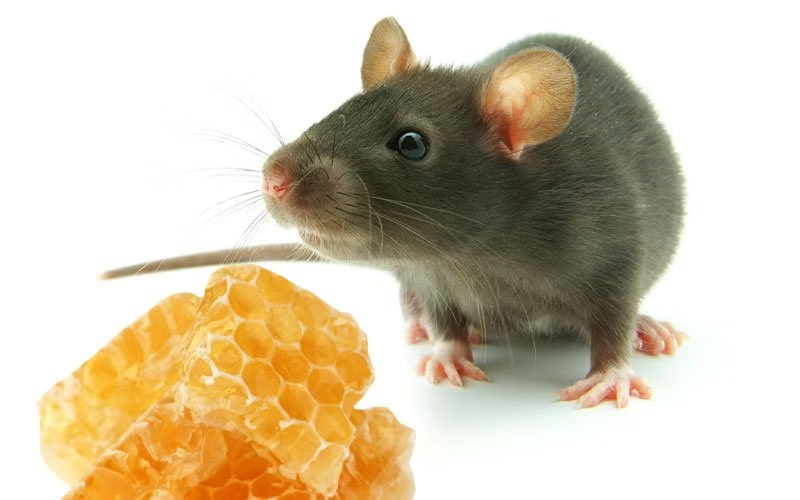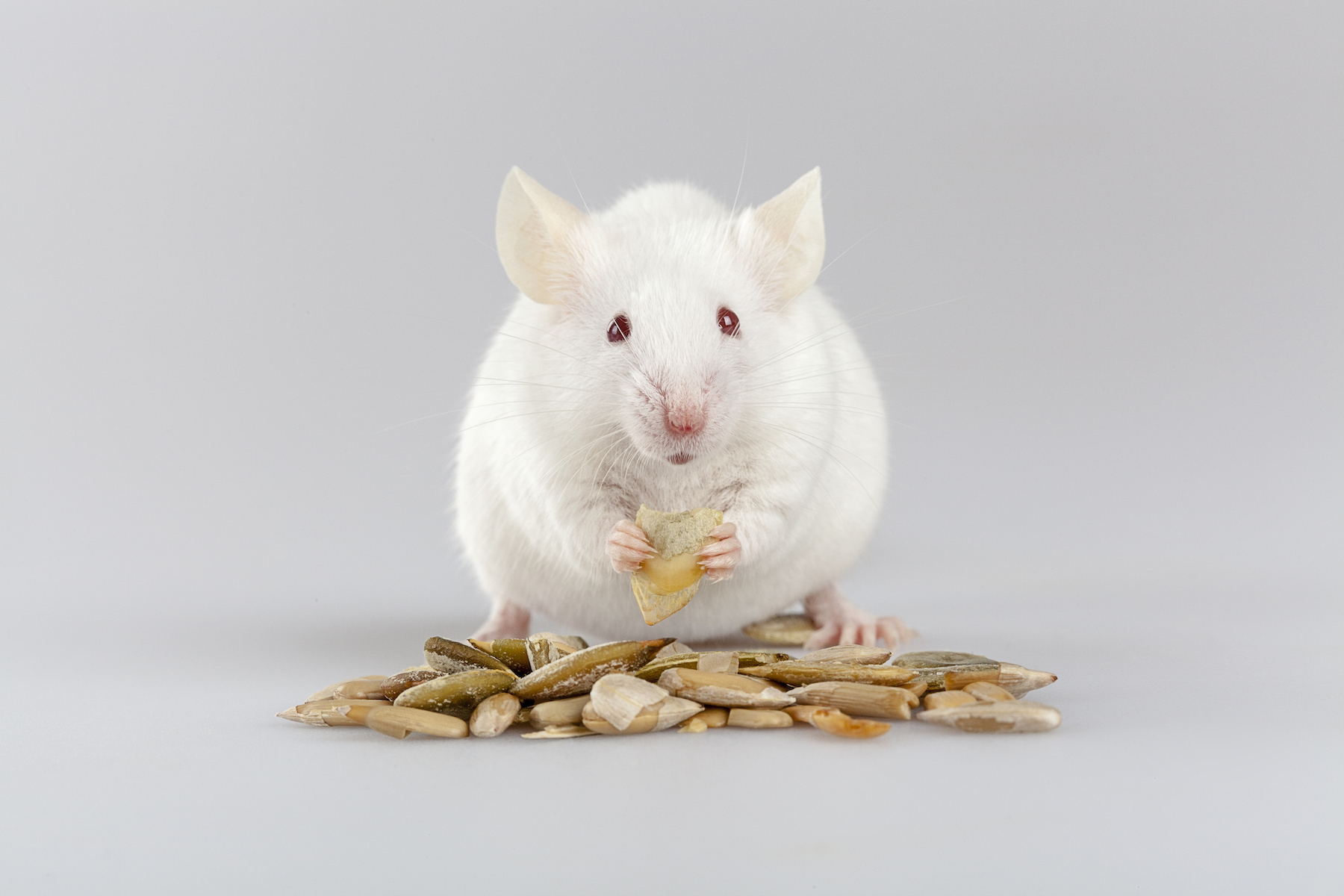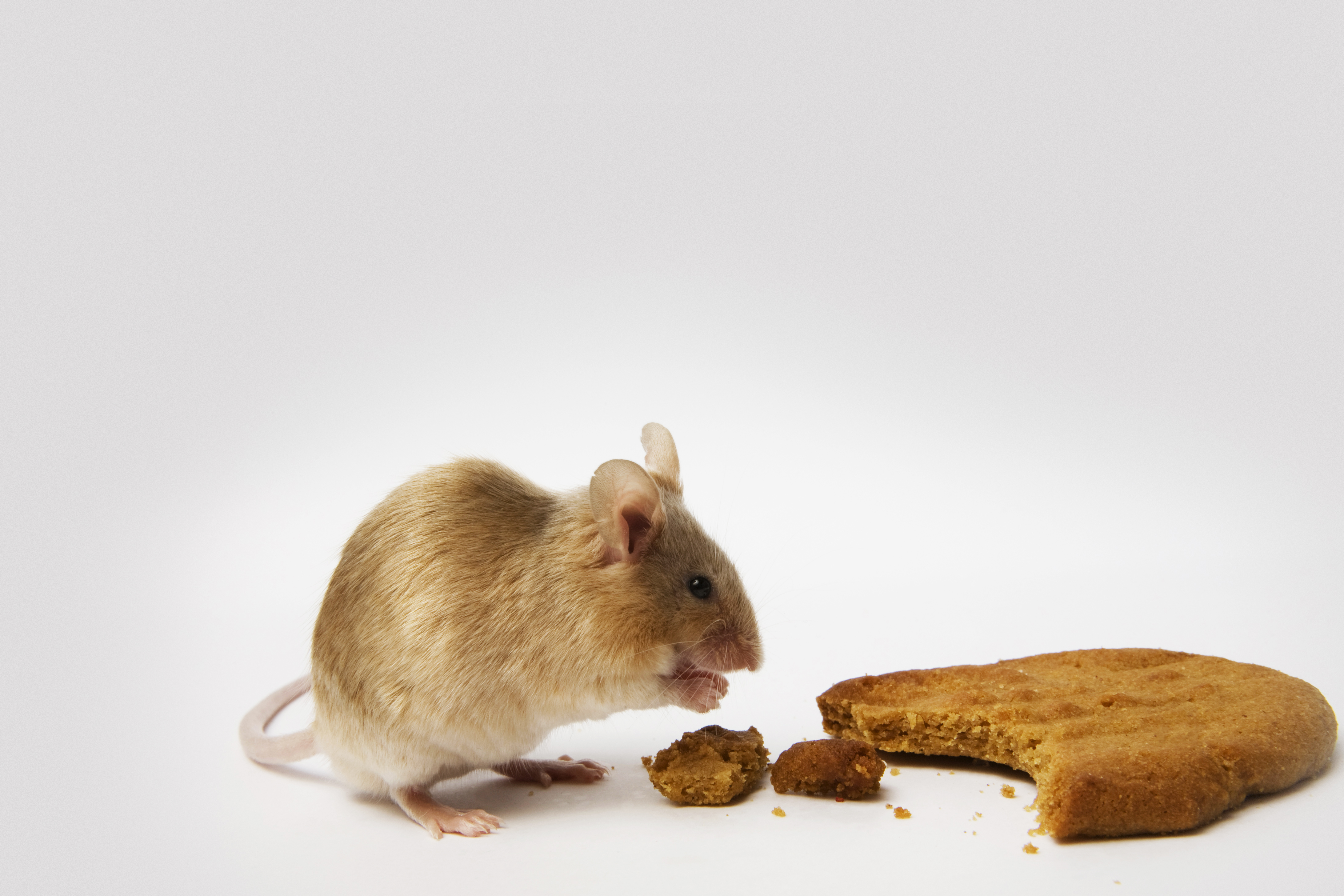What Do Pet Mice Eat? A Comprehensive Guide to Mouse Nutrition
Briefly introduce pet mice as popular and low-maintenance companions.
Pet mice are small, adorable creatures that have gained popularity as pets due to their compact size, playful nature, and low maintenance requirements. These tiny companions make great additions to families or individuals looking for a small pet that doesn’t require as much space or attention as larger pets. Despite their small size, it’s crucial to recognize that pet mice, like all animals, have specific dietary needs that must be met to ensure their health and overall well-being.
Highlight the importance of providing proper nutrition for their health and well-being.
Proper nutrition plays a vital role in the health and well-being of pet mice. Providing a balanced and nutritious diet ensures that mice receive the essential nutrients necessary for growth, development, and overall vitality. A well-rounded diet also helps support their immune system, maintain a healthy weight, and promote optimal organ function. By offering mice a diet tailored to their nutritional needs, owners can enhance their pets’ quality of life and help prevent common health issues associated with improper nutrition.
Basic Dietary Needs of Pet Mice
A. Discuss the fundamental dietary requirements for pet mice:
Pet mice have specific dietary requirements to support their growth, energy levels, and overall health. These requirements include a balance of essential nutrients, as well as adequate hydration through access to fresh water.
- Essential Nutrients:
Pet mice require a variety of essential nutrients to maintain their health and well-being. These nutrients include:- Proteins: Necessary for growth, tissue repair, and maintaining a healthy coat. Good sources of protein for mice include commercial mouse food, cooked chicken, and mealworms.
- Carbohydrates: Provide energy for daily activities. Mice can obtain carbohydrates from grains, cereals, and small amounts of fruits and vegetables.
- Fats: Important for providing energy and supporting various bodily functions. Mice can obtain healthy fats from commercial mouse food and small amounts of seeds or nuts.
- Vitamins: Essential for overall health, immune function, and proper growth. Commercial mouse food usually contains adequate vitamin levels, but fresh fruits and vegetables can also supplement their vitamin intake.
- Minerals: Play a crucial role in bone health, nerve function, and metabolic processes. Commercial mouse food often provides necessary minerals, but additional sources can include small amounts of leafy greens and vegetables.
- Adequate Hydration:
Access to fresh water is vital for pet mice to stay hydrated and maintain their bodily functions. Clean water should be available to them at all times, preferably in a water bottle with a sipper tube to prevent spillage and contamination.
B. Emphasize the need for a balanced diet to prevent nutritional deficiencies:
A balanced diet is essential for pet mice to prevent nutritional deficiencies and associated health problems. Relying solely on one type of food can lead to imbalances and deficiencies in essential nutrients. It is crucial to provide a variety of foods that meet their nutritional needs. A balanced diet ensures that mice receive all the necessary nutrients in appropriate proportions, promoting their overall health, vitality, and longevity. Owners should strive to provide a combination of commercial mouse food, fresh foods, and occasional treats to ensure a well-rounded and nutritionally complete diet for their pet mice.
Commercial Mouse Food
A. Describe commercially available mouse food as a convenient option.
Commercially available mouse food is a convenient and readily accessible option for providing balanced nutrition to pet mice. These specially formulated diets are designed to meet the specific dietary needs of mice, making them an ideal choice for owners seeking a hassle-free feeding solution. They come in the form of pellets or blocks and are typically available at pet stores or online.
B. Discuss the advantages of nutritionally complete and balanced pellet diets.
Nutritionally complete and balanced pellet diets offer several advantages for pet mice:
- Comprehensive Nutrition: These diets are formulated to provide a balanced combination of proteins, carbohydrates, fats, vitamins, and minerals, ensuring that mice receive all the essential nutrients they need in the correct proportions.
- Convenience: Pellet diets are convenient to feed as they provide a complete meal in a compact form. They eliminate the need to measure out individual ingredients and ensure that mice receive a consistent and balanced diet with each serving.
- Prevents Selective Feeding: Pellets discourage selective feeding, where mice may pick and choose certain ingredients while neglecting others. This helps prevent nutritional imbalances and deficiencies that could arise from selective feeding.
- Dental Health: The hard texture of pellets helps promote dental health by providing mice with the opportunity to chew and wear down their continuously growing incisors.
C. Provide tips for selecting high-quality commercial mouse food.
When selecting commercial mouse food, it is essential to choose a high-quality product that meets the nutritional needs of pet mice effectively. Consider the following tips:
- Read the Label: Look for mouse food that clearly states it is formulated for mice and provides a complete and balanced diet.
- Ingredient Quality: Opt for mouse food that contains high-quality ingredients, such as whole grains, natural proteins, and minimal fillers or artificial additives.
- Trusted Brands: Choose reputable brands known for their commitment to pet nutrition and quality control.
- Age-specific Formulas: Consider age-specific formulas, as the nutritional requirements of growing mice may differ from those of adult or senior mice.
- Consult a Veterinarian: If unsure about which commercial mouse food to choose, consult a veterinarian who can provide specific recommendations based on your mouse’s individual needs.
By selecting high-quality commercial mouse food, owners can confidently provide their pet mice with a nutritionally balanced diet that supports their overall health and well-being.
Fresh Foods for Mice
A. Explain the benefits of incorporating fresh foods into a mouse’s diet.
Incorporating fresh foods into a mouse’s diet offers several benefits, including:
- Increased Nutritional Variety: Fresh fruits, vegetables, and herbs provide a wide range of essential vitamins, minerals, and antioxidants that may not be present in commercial mouse food alone. This variety helps ensure mice receive a diverse array of nutrients for optimal health.
- Enrichment and Stimulation: Introducing fresh foods stimulates mice’s natural foraging instincts and provides mental and physical enrichment. It adds variety to their diet and can make feeding time more interesting and enjoyable.
- Improved Hydration: Many fresh fruits and vegetables have high water content, contributing to the overall hydration of mice.
B. List safe and suitable fruits, vegetables, and herbs for mice:
When offering fresh foods to mice, it is important to choose options that are safe and suitable for their consumption. Here are some examples:
- Nutrient-rich options:
- Carrots
- Broccoli
- Apples (seedless and without the core)
- Spinach
- Blueberries
- Bell peppers (red, green, or yellow)
- Kale
- Cucumbers
- Parsley
- Caution against toxic foods:
- Onions
- Garlic
- Citrus fruits (such as oranges and lemons)
- Avocado
- Grapes
- Chocolate
- Caffeinated beverages
It is crucial to note that these lists are not exhaustive, and introducing additional safe fresh foods can provide further variety in a mouse’s diet. Always research and ensure that any new food offered to mice is safe for consumption.
C. Offer guidance on introducing new foods gradually to prevent digestive upset.
When introducing new foods to a mouse’s diet, it is important to do so gradually to prevent digestive upset. Follow these guidelines:
- Start with small amounts: Begin by offering a small portion of the new food.
- Observe for any adverse reactions: Monitor the mouse’s response to the new food, such as signs of gastrointestinal upset or allergic reactions.
- Gradually increase quantity: If the mouse tolerates the new food well, gradually increase the portion size over several days.
- Rotate fresh foods: Offer a variety of fresh foods to ensure a balanced diet and prevent overreliance on a single item.
- Remove uneaten fresh food: If the mouse does not consume the fresh food within a few hours, remove it to prevent spoilage and bacterial growth.
By introducing fresh foods gradually and monitoring the mouse’s response, owners can provide a diverse and nutritious diet while minimizing the risk of digestive issues.
Protein Sources for Mice
A. Highlight the importance of protein for mice’s growth and overall health.
Protein is vital for mice’s growth, development, and overall health. It is essential for building and repairing tissues, supporting immune function, and maintaining a healthy coat. Adequate protein intake ensures proper muscle development and helps mice maintain their energy levels. Including appropriate protein sources in their diet is crucial to meet their nutritional needs.
B. Suggest protein-rich foods suitable for mice:
When providing protein to mice, it is important to offer suitable options that meet their dietary requirements. Here are some protein-rich foods suitable for mice:
- Commercial mouse treats with high protein content:
- Look for commercially available mouse treats that are specifically formulated to be high in protein. These treats are often designed to supplement a mouse’s regular diet and provide an additional protein boost.
- Lean sources of animal protein:
- Cooked chicken: Offer small pieces of boneless, skinless cooked chicken as a protein-rich treat. Ensure it is plain, without seasoning or added oils.
- Boiled eggs: Hard-boiled eggs can be given occasionally as a source of protein. Remove the shell and offer small pieces of the cooked egg.
- Mealworms: Mealworms are a popular choice for providing animal protein to mice. They can be purchased freeze-dried or live from pet stores and are a favorite treat for many mice.
C. Caution against excessive protein intake, as it can lead to health issues.
While protein is important for mice, it is crucial to avoid excessive protein intake. Offering excessive amounts of protein can lead to health issues such as obesity, kidney problems, and imbalances in the overall diet. It is recommended to provide protein in moderation and as part of a balanced diet. Consult with a veterinarian to determine the appropriate amount of protein for your specific mouse based on its age, activity level, and overall health.
Remember to introduce new protein sources gradually and monitor your mouse’s response to ensure they tolerate and digest the protein-rich foods well.
Treats and Supplements
A. Discuss the role of treats as occasional rewards and enrichment.
Treats play a role in mice’s lives as occasional rewards and sources of enrichment. They provide mental stimulation, encourage natural behaviors like foraging, and strengthen the bond between the mouse and its owner. Offering treats can be a positive reinforcement during training or simply a way to provide variety and enjoyment in a mouse’s diet.
B. Recommend safe and healthy treats for mice:
When selecting treats for mice, it is important to choose options that are safe and healthy. Here are some recommendations:
- Commercial mouse treats formulated for their dietary needs:
- Look for commercially available mouse treats that are specifically formulated for mice. These treats are designed to be nutritionally balanced and suitable for their dietary requirements. They can provide a safe and convenient option for the occasional indulgence.
- Small amounts of suitable human foods:
- Whole grains: Offer small amounts of cooked grains like oats, barley, or quinoa.
- Unsalted nuts: Mice can enjoy small pieces of unsalted nuts like almonds or walnuts as an occasional treat.
- Seeds: Sunflower seeds or pumpkin seeds can be provided in limited quantities.
It is important to note that treats should only make up a small portion of a mouse’s overall diet. The bulk of their nutrition should come from a balanced diet of commercial mouse food and fresh foods.
C. Advise caution when offering treats to avoid overfeeding and obesity.
It is crucial to exercise caution when offering treats to mice to prevent overfeeding and obesity. Treats should be given in moderation and should not exceed 10% of a mouse’s daily caloric intake. Monitor your mouse’s weight and adjust the amount of treats accordingly. Overfeeding of treats can lead to nutritional imbalances, weight gain, and associated health problems.
D. Mention the potential need for supplements based on a veterinarian’s recommendation.
In general, a well-balanced diet of commercial mouse food and fresh foods should provide mice with the necessary nutrients. However, in some cases, a veterinarian may recommend specific supplements based on a mouse’s individual needs. These supplements could include vitamins, minerals, or other dietary additives. It is important to consult with a veterinarian who can assess the mouse’s health and provide appropriate recommendations regarding supplements, if necessary.
As always, it is best to consult with a veterinarian for specific advice tailored to your mouse’s unique dietary requirements and overall health.
Feeding Guidelines and Practices
A. Provide general guidelines for serving sizes and feeding frequency.
When it comes to serving sizes and feeding frequency for mice, it is important to consider their individual needs, age, activity level, and overall health. Here are some general guidelines:
- Serving sizes: Offer a measured amount of commercial mouse food based on the manufacturer’s recommendations. This will ensure that mice receive the necessary nutrients without overfeeding. Generally, a tablespoon of pellets per mouse per day is a common starting point. Adjust the portion size as needed, keeping an eye on the mouse’s weight and body condition.
- Feeding frequency: Mice are typically fed once or twice a day. Split the daily portion into multiple small meals to mimic their natural feeding pattern. This helps prevent overeating and encourages them to engage in natural foraging behaviors.
B. Encourage interactive feeding methods to stimulate mice’s natural foraging instincts.
Interactive feeding methods can provide mental stimulation and engage mice’s natural foraging instincts. Here are some ideas to encourage interactive feeding:
- Scatter feeding: Instead of placing food in a dish, scatter small portions of food around the enclosure. This encourages mice to search and forage for their food, keeping them mentally and physically active.
- Food puzzles: Use food puzzles or treat-dispensing toys designed for small animals. These puzzles require mice to work and manipulate the puzzle to access their food, providing mental stimulation and enrichment.
- Hide and seek: Hide small portions of food in various locations within the enclosure. This encourages mice to explore their environment and seek out their food.
Remember to monitor the food to ensure it is consumed within a reasonable time to prevent spoilage.
C. Emphasize the importance of clean feeding dishes and food storage practices.
Maintaining clean feeding dishes and proper food storage practices is crucial for the health and well-being of mice. Here are some tips:
- Clean feeding dishes: Wash food dishes regularly with mild soap and warm water to remove any food residue or bacteria. Rinse thoroughly and ensure they are completely dry before adding fresh food. Avoid using harsh chemicals or cleaners that could be toxic to mice.
- Food storage: Store commercial mouse food in a cool, dry place in a sealed container to maintain its freshness and prevent pests from accessing it. Follow the manufacturer’s guidelines for storage recommendations. Discard any expired or spoiled food.
- Fresh food hygiene: If offering fresh foods, ensure they are fresh, clean, and free from mold or signs of spoilage. Wash fruits and vegetables thoroughly before offering them to remove any pesticides or contaminants.
By practicing good hygiene and clean feeding practices, you can help ensure the health and safety of your mice and minimize the risk of food-related issues.
(FAQs) related to feeding mice:
- How much should I feed my mouse?
The amount of food to feed a mouse depends on factors such as its age, activity level, and overall health. Generally, a tablespoon of commercial mouse food per mouse per day is a good starting point. Adjust the portion size based on your mouse’s individual needs and monitor their weight and body condition. - Can mice eat fruits and vegetables?
Yes, mice can eat certain fruits and vegetables. Safe options include carrots, broccoli, apples (seedless and without the core), spinach, blueberries, bell peppers, kale, cucumbers, and parsley. However, introduce new foods gradually and monitor your mouse’s response. - Can I give my mouse treats?
Yes, you can give your mouse treats occasionally as a reward or for enrichment. Look for commercially available mouse treats formulated for their dietary needs. You can also offer small amounts of suitable human foods like whole grains and unsalted nuts. - How often should I clean my mouse’s feeding dish?
It is important to clean your mouse’s feeding dish regularly. Wash it with mild soap and warm water to remove any food residue or bacteria. Rinse thoroughly and ensure it is completely dry before adding fresh food. Aim to clean the dish at least once a day or as needed. - Should I offer my mouse fresh water?
Yes, mice should have access to fresh, clean water at all times. Provide a water bottle or a shallow dish filled with fresh water. Check the water source daily and refill as needed. - Can mice have too much protein?
Yes, excessive protein intake can lead to health issues in mice. It is important to provide protein in moderation and as part of a balanced diet. Avoid overfeeding protein-rich foods, as it can contribute to obesity and other health problems. - Do mice need supplements?
In general, a well-balanced diet of commercial mouse food and fresh foods should provide mice with the necessary nutrients. However, in certain cases, a veterinarian may recommend specific supplements based on a mouse’s individual needs. Consult with a veterinarian for personalized advice.
Remember, if you have specific concerns or questions about your mouse’s diet or health, it is always best to consult with a veterinarian who can provide tailored guidance based on your mouse’s unique needs.


:strip_icc()/GettyImages-1183697729-904b1f698da94ea7aa82c56b8b16f5cd.jpg)

